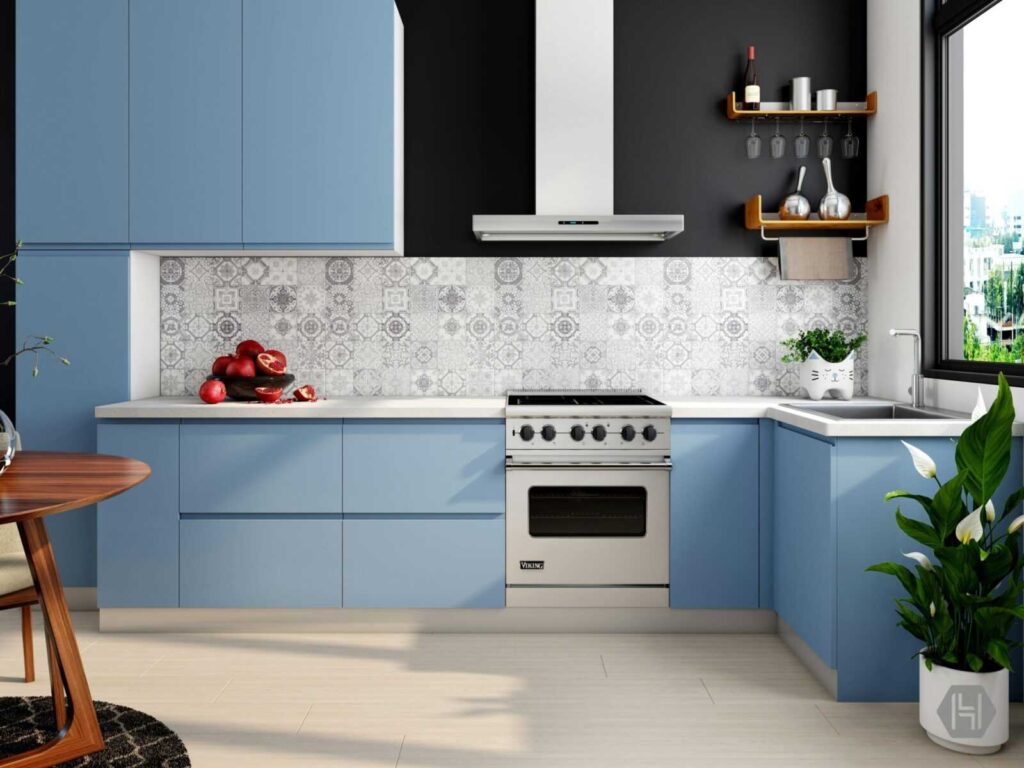The Greener Kitchen: Eco-Friendly Appliances and Sustainable Cooking Practices

Table of Contents
Imagine whipping up a delectable meal bathed in natural light, surrounded by eco-conscious choices that nourish both your body and the planet. This isn’t a utopian fantasy; it’s the reality waiting to unfold in your very own kitchen! Welcome to “The Greener Kitchen,” your guide to creating a culinary haven that celebrates sustainability without compromising on flavor or functionality.
In today’s world, where environmental consciousness takes center stage, our kitchens can become powerful tools for positive change. By embracing eco-friendly practices and utilizing innovative appliances, we can savor delicious meals while minimizing our ecological footprint. This guide isn’t just about swapping plastic wrap for reusable containers (although that’s a fantastic first step!); it’s about unlocking a world of sustainable possibilities, from energy-efficient cooking to creative ways to reduce food waste.
Get ready to embark on a journey that will transform your kitchen into a haven of deliciousness and environmental responsibility. We’ll explore everything from choosing the right appliances to mastering the art of sustainable meal planning, all while equipping you with practical tips and actionable steps. So, grab your reusable grocery bag and join us as we delve into the vibrant world of “The Greener Kitchen!
The kitchen is often considered the heart of the home, yet it is also one of the most resource-intensive areas. From energy consumption in cooking and cooling to water usage and food waste, kitchen activities have a significant environmental footprint. As awareness of environmental issues grows, the adoption of eco-friendly kitchens is becoming increasingly prevalent. Creating a greener kitchen involves integrating eco-friendly appliances and sustainable cooking practices, which together can substantially reduce the carbon footprint of this vital space.
Eco-friendly appliances, such as energy-efficient refrigerators, dishwashers, and ovens, play a crucial role in minimizing energy consumption. These appliances are designed to use less power while maintaining high performance, thereby reducing greenhouse gas emissions associated with electricity generation. The use of the best Energy Star appliances, for instance, can lead to significant energy savings and lower utility bills, making them both environmentally and economically beneficial.
Sustainable cooking practices are equally important in creating a greener kitchen. This includes using eco-friendly cookware like cast iron, which is durable and can last for generations, reducing the need for frequent replacements. Additionally, adopting methods to reduce food waste, such as meal planning and composting, can further decrease the environmental impact of cooking. By making conscious choices about how food is prepared and stored, individuals can contribute to a more sustainable lifestyle.
Overall, the transition to an eco-friendly kitchen is not just about individual appliances or habits, but about a holistic approach to reducing environmental impact. Implementing green kitchen tips and investing in sustainable technology can make a substantial difference. The collective effort to adopt eco-friendly cooking and kitchen practices holds the potential to significantly lower carbon footprints and promote a healthier planet.
Choosing Energy-Efficient Appliances
When it comes to creating a green kitchen, selecting energy-efficient appliances is paramount. The modern market offers an array of options, but navigating through them requires a keen understanding of what makes an appliance truly eco-friendly. Energy Star ratings are a critical tool in this regard. These ratings, established by the U.S. Environmental Protection Agency, help consumers identify products that consume less energy and reduce greenhouse gas emissions without sacrificing performance. Appliances with Energy Star ratings typically use 10-50% less energy compared to their non-rated counterparts, resulting in significant savings on utility bills and a reduced carbon footprint.
When shopping for a new refrigerator, look for models with high Energy Star ratings. These refrigerators often feature advanced compressors, improved insulation, and precise temperature controls, all of which contribute to lower energy consumption. Additionally, consider opting for a refrigerator with a top or bottom freezer, as these configurations tend to be more energy-efficient than side-by-side models.
For dishwashers, prioritize models that incorporate energy-saving features such as soil sensors, which adjust the cycle length and water usage based on how dirty the dishes are. Energy-efficient dishwashers also tend to have better water filtration systems, reducing the need for pre-rinsing and thus conserving water.
When it comes to stoves, induction cooktops are a stellar choice for an energy-efficient kitchen. They use electromagnetic energy to directly heat pots and pans, resulting in faster cooking times and less wasted heat compared to traditional gas or electric stoves. Additionally, induction cooktops are compatible with a variety of eco-friendly cookware, including cast iron and stainless steel, enhancing the sustainability of your cooking practices.
In conclusion, selecting energy-efficient appliances is a crucial step towards achieving a greener kitchen. By focusing on Energy Star ratings and considering the specific energy-saving features of each appliance, consumers can make informed decisions that benefit both their wallets and the environment.

Energy-Efficient Kitchen Appliances for Small Apartments
Living in a small apartment presents unique challenges when it comes to selecting energy-efficient kitchen appliances. Space limitations often require homeowners to make strategic choices to ensure their kitchens remain functional without compromising on sustainability. Fortunately, there are a variety of compact, multifunctional appliances designed to meet the needs of eco-conscious individuals.
One of the foremost considerations is the selection of appliances that serve multiple purposes. For instance, a combination microwave and convection oven can replace both a traditional oven and a microwave, reducing the number of appliances needed and saving valuable counter space. Such appliances are typically energy efficient, offering the added benefit of lower energy consumption.
Another excellent choice for small kitchens is a compact, energy-efficient refrigerator. Many models are designed to fit under countertops or in narrow spaces, without sacrificing storage capacity or features. Look for refrigerators that are Energy Star certified, as they use significantly less energy compared to standard models. The Energy Star label guarantees that the appliance meets rigorous energy efficiency guidelines set by the Environmental Protection Agency.
Induction cooktops are also a smart addition to a green kitchen. These appliances are not only space-saving but also highly energy efficient. Induction cooking uses electromagnetic energy to directly heat pots and pans, resulting in faster cooking times and reduced energy waste. Additionally, induction cooktops have a sleek design that complements the aesthetics of modern, compact kitchens.
To further enhance sustainability, consider incorporating eco-friendly cookware such as cast iron cookware. Cast iron is known for its durability and excellent heat retention, making it a long-lasting and energy-efficient option. When used with energy-efficient appliances, it can significantly reduce overall energy consumption in the kitchen.
For those aiming to create an energy-efficient kitchen in a small apartment, it is essential to prioritize multifunctional, compact appliances and Energy Star certified products. By making thoughtful choices, it is possible to design a kitchen that is both space-efficient and eco-friendly, contributing to a reduced environmental footprint.
Sustainable Meal Prep Tips for Busy Families
For busy families, integrating sustainable meal prep practices into daily routines can be both practical and beneficial. One of the most effective strategies is batch cooking. By preparing meals in large quantities, families can save not only time but also energy by reducing the frequency of cooking. Batch cooking also allows for efficient use of eco-friendly appliances, such as convection ovens and energy-efficient slow cookers, which can further reduce the household’s energy consumption.
Another key element of sustainable cooking is the use of seasonal and local ingredients. Seasonal produce is fresher, more nutritious, and requires less energy for transportation. Shopping at local farmers’ markets or subscribing to a community-supported agriculture (CSA) program can provide families with a variety of fresh, local ingredients while supporting local farmers. This practice also reduces the carbon footprint associated with long-distance food transport and storage, promoting a greener kitchen environment.
Reducing food waste is another critical aspect of sustainable meal prep. Planning meals in advance and creating a detailed shopping list can help avoid over-purchasing. Additionally, using versatile recipes that allow for the incorporation of leftovers can minimize waste. For example, vegetable scraps can be used to make homemade broths, and leftover grains can be repurposed into salads or stir-fries. Storing food properly in eco-friendly containers can also extend the shelf life of ingredients, further reducing waste.
To save time and energy, families can consider investing in the best Energy Star appliances available. These appliances are designed to consume less power, making them a smart choice for an energy-efficient kitchen. Additionally, using cast iron cookware can be an eco-friendly choice due to its durability and heat retention properties, which can reduce cooking times and energy use.
Implementing these green kitchen tips can make meal prep more manageable and environmentally friendly for busy families. By making conscious choices about cooking methods, ingredient sourcing, and waste reduction, families can enjoy the benefits of sustainable cooking while contributing to a healthier planet.
Best Countertop Compost Bins for Kitchens
Composting is a crucial aspect of reducing kitchen waste and promoting sustainable cooking practices. By converting organic waste into nutrient-rich compost, homeowners can minimize the amount of trash sent to landfills and enhance the health of their gardens. Choosing the right countertop compost bin involves considering several factors, such as size, odor control, and ease of use. Here, we review some of the best compost bins available on the market tailored for eco-friendly kitchens.
One of the top recommendations is the Utopia Kitchen Stainless Steel Compost Bin. This bin boasts a sleek, modern design and is made from high-grade stainless steel, ensuring durability and resistance to rust. Its 1.3-gallon capacity is perfect for daily kitchen use, and the tight-fitting lid with charcoal filters helps control odors effectively, making it an ideal choice for households focused on maintaining a green kitchen.
Another excellent option is the EPICA Stainless Steel Compost Bin. With a similar capacity of 1.3 gallons, this bin is also constructed from high-quality stainless steel, offering longevity and ease of cleaning. The airtight lid and replaceable charcoal filter system ensure that kitchen odors are kept at bay, making it a practical addition to any eco-friendly kitchen.
For those looking for a more compact solution, the OXO Good Grips Easy-Clean Compost Bin is an outstanding choice. Its 0.75-gallon capacity makes it suitable for smaller kitchens or households that produce less organic waste. The smooth interior walls prevent food and liquids from building up, and the flip-up lid can be operated with one hand for added convenience. This bin is designed with simplicity and functionality in mind, ensuring a seamless composting experience.
Finally, the Full Circle Fresh Air Odor-Free Kitchen Compost Bin stands out due to its unique air circulation system. This 1.5-gallon bin uses a patented design to allow airflow through the organic waste, reducing odor naturally. Additionally, it features a push-button lid and compostable bags for easy disposal, making it an excellent choice for those committed to sustainable cooking and reducing food waste.
When selecting a countertop compost bin, consider the size that best fits your kitchen space and amount of organic waste. Prioritize models with effective odor control systems and user-friendly designs to ensure a positive composting experience. By integrating a high-quality compost bin into your kitchen, you contribute significantly to reducing food waste and fostering an eco-friendly lifestyle.
Sustainable Alternatives to Plastic Wrap
In the quest for a greener kitchen, one of the most impactful changes you can make is replacing traditional plastic wrap with eco-friendly alternatives. Plastic wrap is a common kitchen staple, but its environmental footprint is significant. It contributes to plastic waste, which often ends up in landfills or oceans, causing harm to wildlife and ecosystems. Fortunately, there are several sustainable options available that can help mitigate these issues.
One popular alternative is beeswax wraps. These wraps are made from organic cotton coated with beeswax, tree resin, and jojoba oil, making them reusable, biodegradable, and compostable. They can be used to cover bowls, wrap sandwiches, or store fruits and vegetables. Beeswax wraps are not only versatile but also lend a natural, breathable barrier that helps keep food fresh longer.
Silicone covers are another excellent eco-friendly option. These stretchable lids come in various sizes and can fit over different types of containers. Made from food-grade silicone, they are reusable, durable, and dishwasher safe. Silicone covers create an airtight seal, which helps in preserving food and reducing food waste cooking practices. Plus, they eliminate the need for single-use plastics, making them a staple in any energy efficient kitchen.
Reusable containers, such as glass or stainless steel, offer a robust solution for food storage. These containers are long-lasting, do not leach chemicals into food, and are often microwave and dishwasher safe. Investing in high-quality, reusable containers can significantly reduce your reliance on plastic wrap and contribute to a more sustainable kitchen environment.
The environmental impact of plastic waste cannot be overstated. By switching to sustainable alternatives like beeswax wraps, silicone covers, and reusable containers, you contribute to reducing the amount of plastic waste generated. These eco-friendly solutions not only benefit the environment but also promote healthier and more sustainable cooking practices. Adopting these alternatives is a simple yet effective step toward achieving a green kitchen.
Energy-Saving Hacks for Oven Use
Maximizing energy efficiency in the kitchen is crucial for both the environment and your utility bills. One of the primary appliances that can be optimized for better energy use is the oven. By implementing a few smart practices, you can ensure your oven operates efficiently and contributes to a more sustainable kitchen.
Preheating the oven is often necessary for certain recipes, but it’s essential to avoid over-preheating. Preheat your oven only for the required time, and consider skipping this step for dishes that can start in a cold oven. This practice reduces unnecessary energy consumption and still achieves great cooking results.
Batch cooking is another excellent strategy for energy-efficient kitchen practices. By cooking multiple dishes at once or consecutively, you can make full use of the oven’s heat. This approach not only saves energy but also streamlines meal preparation, making your kitchen routine more efficient.
Utilizing residual heat is a simple yet effective tip. Turn off the oven a few minutes before the cooking time is up. The remaining heat will finish cooking the dish without consuming additional energy. This technique works particularly well for baked goods and casseroles.
Convection settings are beneficial for eco-friendly cooking. Convection ovens circulate hot air, reducing cooking times and temperatures. This feature can lead to energy savings of up to 20%, making it a worthy consideration when choosing the best energy star appliances for your kitchen.
Regular maintenance of your oven is critical to ensure it operates at peak efficiency. Clean your oven regularly to prevent buildup that can hinder performance. Check the door seal and replace it if necessary to maintain a proper seal, preventing heat loss. Additionally, calibrate your oven periodically to ensure accurate temperature settings.
Adopting these energy-saving hacks can significantly reduce energy consumption in your kitchen. By making mindful choices and maintaining your appliances, you contribute to a greener kitchen and promote sustainable cooking practices.
Buying Refurbished Appliances
Choosing refurbished kitchen appliances represents a significant step towards cultivating a green kitchen. Refurbished appliances are pre-owned items that have been restored to like-new condition through rigorous inspection and repair processes. This approach not only extends the life cycle of the products but also contributes to sustainability by reducing the demand for new manufacturing, thereby conserving resources and minimizing waste.
One of the primary advantages of opting for refurbished appliances is the potential for substantial cost savings. Refurbished units typically come at a fraction of the price of brand-new models, making energy-efficient kitchen upgrades more accessible. These appliances often carry warranties and undergo extensive testing to ensure they meet the same operational standards as their new counterparts, providing peace of mind regarding their performance and reliability.
From an environmental perspective, purchasing refurbished appliances helps diminish the carbon footprint associated with the production and disposal of kitchen equipment. This practice aligns with sustainable cooking principles by promoting resource efficiency and reducing electronic waste. Each refurbished item purchased is a step towards a more eco-friendly home, supporting broader efforts to mitigate environmental impact.
When considering refurbished appliances, it’s crucial to buy from reputable sources. Certified retailers, manufacturer outlets, and trusted online platforms offer a variety of refurbished products, often with detailed descriptions of the refurbishment process and quality checks. Look for clear warranties, return policies, and customer reviews to ensure the reliability and longevity of the products. Additionally, verify that the appliances are Energy Star-rated, as this certification indicates higher energy efficiency, further contributing to an eco-friendly kitchen.
In essence, integrating refurbished appliances into your kitchen not only supports sustainable cooking practices but also fosters a culture of mindful consumption. By making informed choices and prioritizing quality and reliability, you can enjoy the benefits of a green kitchen while contributing positively to the environment.
Low-Waste Kitchen Essentials
Creating a low-waste kitchen setup is an integral part of embracing sustainable cooking practices. By investing in eco-friendly cookware and other essential tools, you can significantly reduce your environmental footprint. One of the most effective ways to minimize waste is by using reusable shopping bags. Unlike their single-use counterparts, reusable bags are durable and can be used for years, providing a simple yet impactful way to reduce plastic waste.
Glass storage containers are another fundamental component of a low-waste kitchen. These containers are not only versatile but also more sustainable than plastic alternatives. They can be used for storing leftovers, prepping meals, and even baking. Investing in glass containers can help you cut down on single-use plastic wraps and bags, making your kitchen more eco-friendly. Moreover, they are generally safer for food storage, as they don’t leach chemicals into your meals.
Cloth napkins are also essential for anyone looking to reduce waste in their kitchen. Unlike paper towels and napkins, cloth napkins can be washed and reused multiple times, offering a sustainable alternative that is both cost-effective and environmentally friendly. They add a touch of elegance to your dining experience while contributing to a greener household.
To further enhance your low-waste kitchen, consider incorporating other sustainable products such as beeswax wraps, bamboo utensils, and silicone baking mats. These durable, reusable items help reduce reliance on single-use plastics and contribute to a more sustainable lifestyle. Additionally, focusing on quality over quantity when purchasing kitchen tools ensures that you are investing in products that will last longer, reducing the need for frequent replacements.
Ultimately, a low-waste kitchen is not just about the products you use but also about adopting a mindset of sustainability and mindfulness. By making conscious choices and investing in durable, reusable items, you can create a kitchen environment that is both efficient and environmentally friendly. These small changes can have a significant impact, helping you contribute to a more sustainable future.

Energy-Efficient Cookware
In the pursuit of a greener kitchen, the importance of energy-efficient cookware cannot be overstated. When paired with eco-friendly appliances, such cookware significantly reduces energy consumption, making your cooking practices more sustainable. Notably, materials that conduct heat well, such as cast iron and stainless steel, play a pivotal role in enhancing efficiency. These materials not only reduce cooking times but also minimize energy expenditure.
Cast iron cookware is renowned for its excellent heat retention and distribution properties. Once heated, a cast iron pot or pan maintains its temperature, requiring less energy to keep food cooking. This efficiency translates to shorter cooking times and, consequently, reduced energy use. Additionally, cast iron’s durability ensures a long lifespan, contributing further to its eco-friendly profile.
Similarly, stainless steel cookware offers substantial benefits in terms of energy efficiency. It heats quickly and evenly, ensuring that food is cooked uniformly in a shorter amount of time. Stainless steel is also highly durable and resistant to corrosion, making it a long-lasting addition to any green kitchen. Its non-reactive nature ensures it doesn’t leach harmful chemicals into your food, aligning with health-conscious and eco-friendly practices.
For those looking to invest in high-quality, energy-efficient cookware, there are several reputable brands to consider. Lodge, known for its superior cast iron cookware, offers a range of skillets, Dutch ovens, and griddles that are perfect for sustainable cooking. All-Clad, a leading name in stainless steel cookware, provides a variety of pots and pans that guarantee efficient heat conduction and durability. Another notable mention is Cuisinart, whose stainless steel collections are designed for optimal energy use and longevity.
By choosing energy-efficient cookware, you not only enhance the performance of your eco-friendly appliances but also contribute to a more sustainable kitchen. These investments in quality cookware reduce energy consumption, support sustainable cooking practices, and ultimately foster a greener, more eco-conscious lifestyle.
The Greener Kitchen: FAQ
This FAQ tackles common questions about eco-friendly appliances, sustainable cooking practices, and creating a greener kitchen that’s good for you and the planet.
1. What are some energy-efficient appliances to consider for my kitchen?
Look for appliances with Energy Star certification, which indicates they meet strict energy efficiency standards. Consider features like automatic shut-off, adjustable temperature settings, and appropriate size for your needs (a large fridge for a single person might not be the most efficient choice).
2. How can I cook more sustainably?
- Plan your meals: Reduce food waste by planning meals and creating a grocery list.
- Embrace leftovers: Get creative! Leftovers can be transformed into new dishes, reducing the need to cook every meal from scratch.
- Shop locally and seasonally: Support local farmers and reduce the environmental impact of transporting food long distances.
- Utilize reusable containers: Pack leftovers, store food, and avoid single-use plastic wrap with reusable containers.
3. What are some eco-friendly cookware options?
Popular choices include cast iron skillets, known for durability and even heat distribution. Stainless steel is another eco-friendly option as it lasts for years and can be recycled at the end of its lifespan. Look for cookware made with recycled materials for a bonus eco-edge.
4. How can I reduce water usage in the kitchen?
- Defrost food in the refrigerator: Avoid running water to defrost frozen food.
- Wash dishes with a full load: Run the dishwasher only when it’s full and utilize the energy-saving setting.
- Wash fruits and vegetables in a bowl: Fill a bowl with water for rinsing instead of letting the tap run continuously.
5. What about composting food scraps?
Composting is a fantastic way to reduce waste and create nutrient-rich fertilizer for your plants. Kitchen scraps like vegetable peels, coffee grounds, and eggshells are perfect for composting. Consider countertop compost bins for small spaces.
6. Are there eco-friendly cleaning products for the kitchen?
Yes! Many natural cleaning products like vinegar, baking soda, and lemon juice can effectively clean your kitchen surfaces. Opt for concentrated formulas to reduce packaging waste.
7. I rent my apartment. Can I still have a greener kitchen?
Absolutely! While appliance upgrades might be limited, you can still make a significant impact. Focus on sustainable cooking practices, utilizing reusable containers, and eco-friendly cleaning solutions.
8. Where can I find more information on sustainable recipes?
Online resources abound with delicious and sustainable recipes. Look for websites promoting plant-based dishes, seasonal ingredients, and minimizing food waste with creative leftover transformations.
9. What are some considerations for a sustainable kitchen renovation?
Energy-efficient appliances and water-saving fixtures are key. Consider using recycled materials for countertops or flooring, and opt for natural lighting solutions whenever possible.
10. Small steps, big impact? How can I get started?
Start with one or two changes! Swap plastic wrap for reusable containers, invest in a water-saving faucet aerator, or plan your meals for the week. Every step towards a greener kitchen makes a difference.
The path towards a greener kitchen is paved with delicious discoveries and a sense of accomplishment. With each eco-conscious choice you make, you’re contributing to a healthier planet and fostering a more sustainable future. Remember, even the smallest modifications can have a significant impact.
By embracing the tips and strategies outlined in this guide, you’ll not only create a kitchen that reflects your environmental values but also discover a newfound appreciation for resourceful cooking and mindful consumption. So, go forth, experiment, and most importantly, enjoy the process! As you navigate the exciting realm of “The Greener Kitchen,” remember that every step towards sustainability is a delectable victory for both you and the planet. Let your kitchen be a testament to the power of conscious choices, where culinary creativity meets environmental responsibility. Bon appétit, and happy green cooking!





